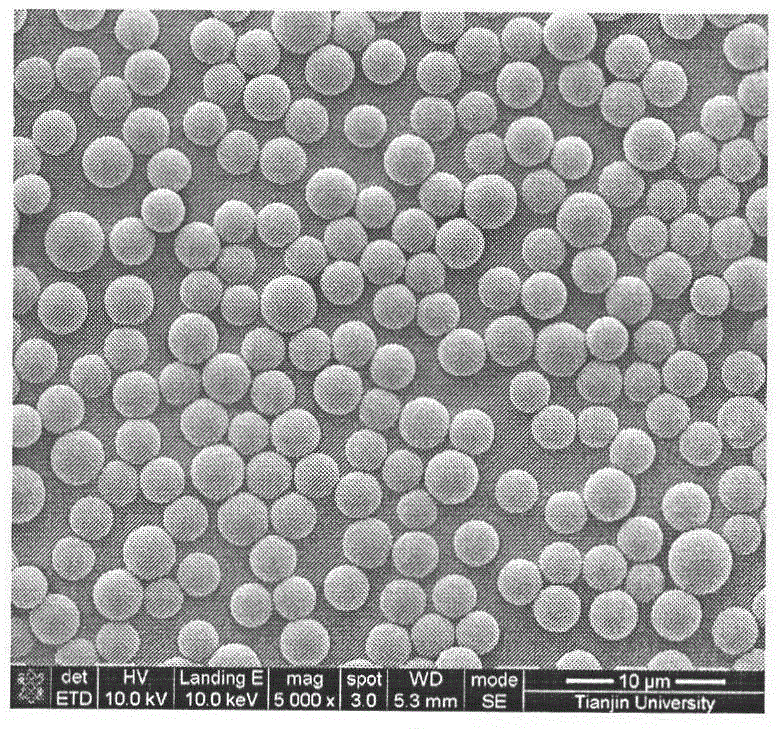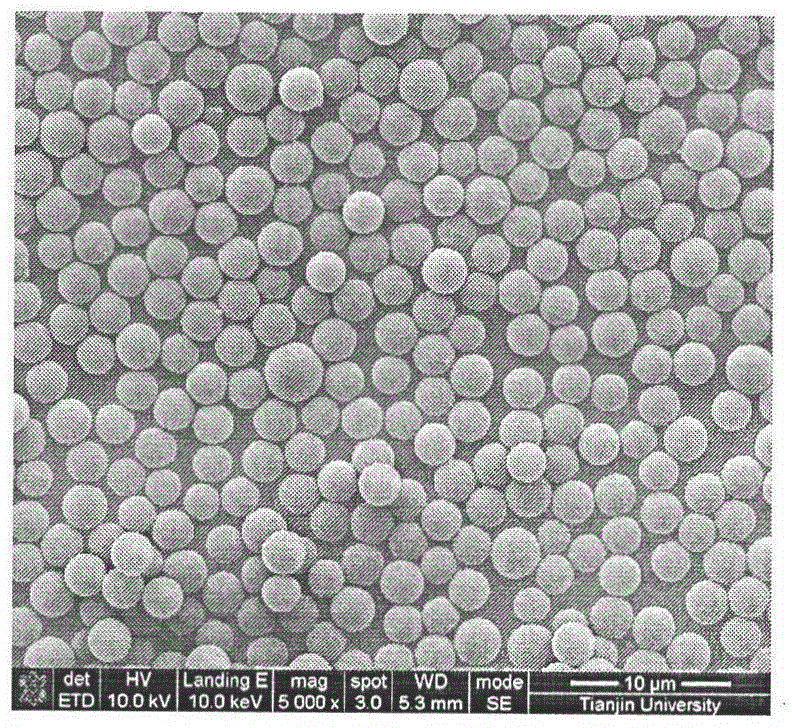Preparation method for molecularly imprinted polymer microballoon with hydrophilic high-molecular brush
A hydrophilic polymer and molecular imprinting technology, which is applied in the fields of alkali metal compounds, chemical instruments and methods, alkali metal oxides/hydroxides, etc., can solve the problem that the brush density of hydrophilic polymers cannot be obtained and is difficult to obtain Problems such as MIP microspheres and complex polymerization systems
- Summary
- Abstract
- Description
- Claims
- Application Information
AI Technical Summary
Problems solved by technology
Method used
Image
Examples
example 1
[0028] Add 150mg of MIP microspheres with 2,4-D as template (double bond content of 0.0408mmol / g) into an eggplant-shaped bottle containing 30mL of dimethylformamide, and then add 0.0736mmol of polyethylene glycol macromolecule Chain transfer agent (M n =5000) and 0.0238mmol of azobisisobutyronitrile (AIBN). After freezing and pumping five times to remove oxygen, the reaction system was sealed, placed in a 60°C constant temperature oil bath, reacted for 48 hours, and centrifuged at high speed to obtain the reaction product.
[0029] Surface grafted hydrophilic polyethylene glycol macromolecular brush (M n =5000) of the non-imprinted polymer microspheres.
example 2
[0031] 150mg of MIP microspheres with 2,4-D as template (double bond content of 0.0408mmol / g) were added to an eggplant-shaped bottle containing 30mL of dimethylformamide, and then 0.0736mmol of poly(N-isopropyl) Acrylamide) macromolecular chain transfer agent (M n,NMR = 10300) and 0.0238 mmol of azobisisobutyronitrile (AIBN). After freezing and pumping five times to remove oxygen, the reaction system was sealed, placed in a 60°C constant temperature oil bath, reacted for 48 hours, and centrifuged at high speed to obtain the reaction product.
[0032] Surface grafted hydrophilic poly(N-isopropylacrylamide) macromolecular brush (M n,NMR =10300) The process of non-imprinted polymer microspheres is the same as above.
example 3
[0034] Add 50mg of MIP microspheres (double bond content 0.0383mmol / g) with propranolol as template into an eggplant-shaped bottle containing 10mL dimethylformamide, and then add 0.0245mmol polyethylene glycol macromolecular chain transfer agent (M n =5000) and 0.0159mmol of azobisisobutyronitrile (AIBN). After freezing and pumping five times to remove oxygen, the reaction system was sealed, placed in a 60°C constant temperature oil bath, reacted for 48 hours, and centrifuged at high speed to obtain the reaction product.
[0035] Surface grafted hydrophilic polyethylene glycol macromolecular brush (M n =5000) The process of non-imprinted polymer microspheres is the same as above.
PUM
 Login to View More
Login to View More Abstract
Description
Claims
Application Information
 Login to View More
Login to View More - R&D
- Intellectual Property
- Life Sciences
- Materials
- Tech Scout
- Unparalleled Data Quality
- Higher Quality Content
- 60% Fewer Hallucinations
Browse by: Latest US Patents, China's latest patents, Technical Efficacy Thesaurus, Application Domain, Technology Topic, Popular Technical Reports.
© 2025 PatSnap. All rights reserved.Legal|Privacy policy|Modern Slavery Act Transparency Statement|Sitemap|About US| Contact US: help@patsnap.com



